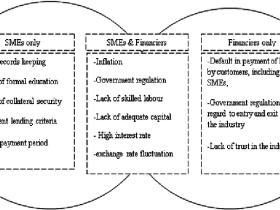We are living in unprecedented times. The COVID-19 pandemic has significantly impacted almost every aspect of our lives, including the way we handle money. As physical contact becomes a potential risk, the world has rapidly shifted towards a cashless economy. Here are 10 ways that COVID-19 has accelerated this transition:
1. Decreased Trust in Physical Currency
As the virus can survive on surfaces, there is a growing concern about the potential transmission of COVID-19 through physical currency. Many people are now hesitant to handle cash, fearing it could be contaminated.
2. Contactless Payments Gain Popularity
The pandemic has paved the way for the use of contactless payment methods such as mobile wallets and payment apps. With just a tap or wave, these methods offer a hygienic and efficient way to pay.
3. Rise of Online Shopping
Lockdowns and social distancing measures have drastically increased the reliance on online shopping. As a result, digital payments have become essential for transactions, further promoting a cashless economy.
4. Closure of Physical Stores and Bank Branches
To contain the virus’s spread, many physical stores and bank branches have been temporarily closed or faced limited operation. This has forced individuals and businesses to seek alternative payment methods, primarily digital options.
5. Reduction in Cash Handling Costs
Handling cash comes with costs, including security, transportation, and labor. By transitioning to a cashless system, businesses can save on these expenses, making it an attractive option even beyond the pandemic.
6. Government Initiatives to Promote Digital Payments
Governments around the world have launched initiatives to encourage digital payments. These efforts aim to reduce the circulation of physical currency, prevent tax evasion, and strengthen financial inclusion.
7. Enhanced Security and Fraud Protection
Digital payments offer enhanced security features and fraud protection measures when compared to physical currency. This has made consumers feel more secure in using cashless methods for their transactions.
8. Ease of Tracking and Budgeting
Cashless transactions leave digital footprints that can be easily tracked, providing individuals with greater control over their spending habits and budgeting. This added convenience has contributed to the shift towards a cashless economy.
9. Introduction of Central Bank Digital Currencies (CBDCs)
The pandemic has accelerated discussions around the introduction of Central Bank Digital Currencies (CBDCs). These digital currencies, backed by central banks, could revolutionize the financial system and eventually replace physical currency altogether.
10. Changing Consumer Behaviors and Preferences
COVID-19 has made people more conscious of hygiene and safety. As a result, consumers are increasingly opting for touchless payment options, preferring the convenience, security, and speed that cashless methods offer.
In conclusion, the COVID-19 pandemic has significantly accelerated the transition towards a cashless economy. Decreased trust in physical currency, the rise of contactless payments, increased online shopping, and government initiatives have all played a role in this shift. With enhanced security, ease of tracking, and changing consumer preferences, it is clear that the world is moving towards a future where cash is no longer king.








Leave a Reply